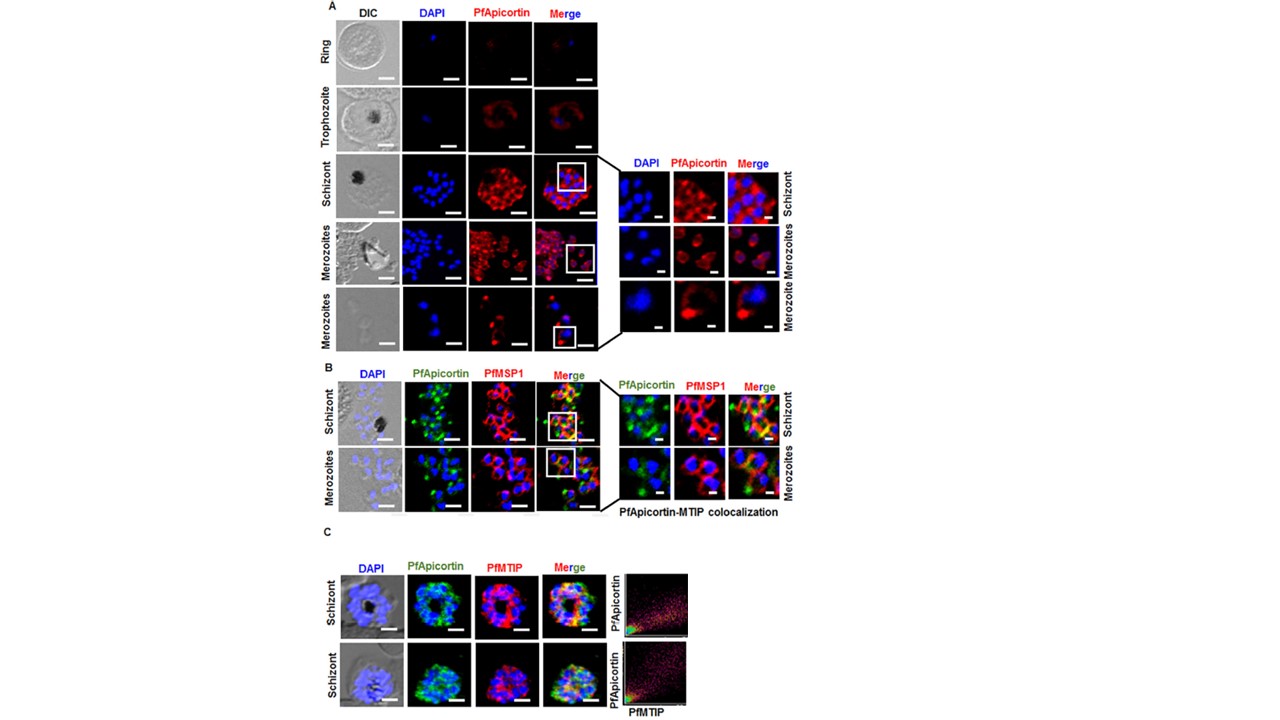Localization of PfApicortin in the asexual blood stage of malaria parasite. (A) Localization of PfApicortin in ring, trophozoite, schizont and merozoite stages. Apicortin is shown in red with magnified images of the schizont and merozoite stages. (B) The presence of PfApicortin in schizont and merozoite stages together with MSP1 as control with magnified images of a portion of the schizont and some of the merozoites. Nuclei were counterstained with DAPI. (C) Colocalization of PfApicortin with MTIP in the schizont stage; the graph shows the
colocalization coefficient. Scale bars: 5 μm. PfApicortin was localized to the apical end of the parasites (A). Localization of PfApicortin was further assessed in schizonts together with merozoite surface protein 1 (MSP1) using immunofluorescence assay (B). A study of PfApicortin and PfMTIP in mature schizonts demonstrated a high extent of colocalization (C), indicating a possible role of PfApicortin in microtubule dynamics and invasion.
Chakrabarti M, Joshi N, Kumari G, Singh P, Shoaib R, Munjal A, Kumar V, Behl A, Abid M, Garg S, Gupta S, Singh S. Interaction of Plasmodium falciparum apicortin with α- and β-tubulin is critical for parasite growth and survival. Sci Rep. 2021 11(1):4688.
Other associated proteins
| PFID | Formal Annotation |
|---|---|
| PF3D7_0930300 | merozoite surface protein 1 |
| PF3D7_1246400 | myosin a-tail interacting protein |
